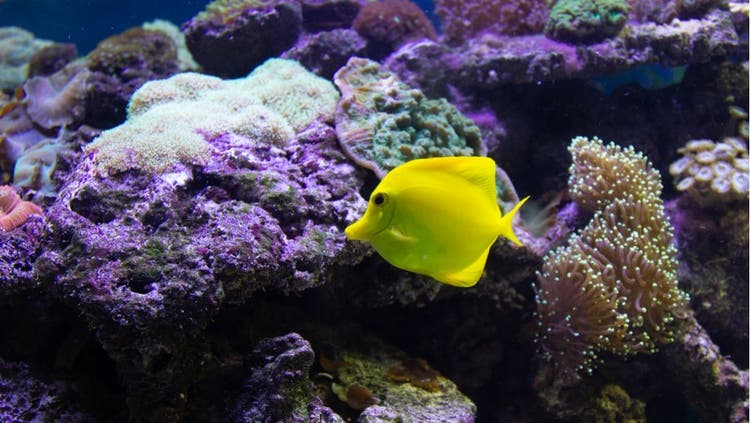
What To Do Before Adding Fish to the Tank
Most hobby marine aquarists just don’t know how good they have it now. Prior to the 1960s, freshwater tanks suffered great fluctuations in water quality until they were established, and it was nearly impossible to keep marine fish and invertebrates. Species introduced to a new tank usually died within several days or a week, their cause of death unknown for certain but usually attributed to disease, capture-stress or water pollution.
However, during the 1960s, studies conducted in Japan deciphered how a filter bed is established with nitrifying bacteria, which remove fish waste from the water. From these studies aquarists could now see that their pets were dying because their tanks did not have a healthy bacterial culture that could handle the waste and keep the water quality up to par.
Establishing this bacterial culture in your tank before you go out and buy all your fish is clearly a crucial process and you should not rush it. This is known as the “conditioning period,” or the “run-in period,” and requires three to 6 weeks, depending on the aquarium conditions and temperatures.
During this time, your tank goes through several drastic chemical changes. Within about the first week, ammonia levels skyrocket to about 6 to 8 ppm (parts per million) and then slowly level off as the bacteria that process ammonia into nitrite become established. Consequently, about 2 weeks into the process, ammonia levels fall while nitrite levels rise to about 5 to 7 ppm. The next group of bacteria, those that process nitrite into nitrates, become established. After about a month and a half, the bacterial cultures are prolific and both ammonia and nitrites should fall to less than 1 ppm. This marks the end of your conditioning period. Throughout this process, organics will increase and pH will decrease, while nitrates increase steadily. Very few fish can handle this chemical rollercoaster. Indications of ammonia or nitrite poisoning include lack of feeding, loss of color and increased respiration.
Fish That Can Deal With Conditioning
The bacteria need food, so an ammonia source should be in the tank. The most popular and hardy marine fish that are used to begin the conditioning process are damselfish. In freshwater tanks, barbs or rasboras make good starter fish. These fish seem best able to handle the drastic fluctuations in water quality and endure conditions that would mean certain death for most other fish.
If you don’t want to wait, the conditioning process can be hastened by seeding your aquarium with gravel or bioballs from an already established system. If you choose to do this, you must make certain that you are not introducing any parasites or other diseases into your new clean tank. If you don’t happen to have an aquarist friend willing to part with some healthy cultures, then you can purchase bacterial solutions that are added into the water. It is important that you do not add any medications or other chemicals during the conditioning phase. The seeding processes, although not always safe, can shorten the duration of the conditioning period by 8 to 10 days.
Monitor Your Water
Throughout the run-in, you must monitor your aquarium water; pH should be checked every few days. When synthetic seawater is first mixed, you’ll find it has a pH value between 8.0 and 8.5, but then drops during the conditioning phase. Try not to let the pH get below the acceptable range, otherwise your bacteria cannot be properly established. Ammonia and nitrite tests should be performed every day and noted in your aquarium journal. The levels should not go beyond the limit of the test kits. These are dangerous levels even for the bacteria and you may have to do a partial water change to get the conditioning phase back on track. Once you notice that the ammonia and nitrites have dropped off, your conditioning process is complete.
It is best to add only a few fish, about one or two a week, and carefully monitor water quality to make sure you’re not overloading your tank. After adding a new fish, you’ll notice that ammonia levels will increase slightly for a few days, but soon, the bacteria will catch up with this new food source and should go back to “normal” levels. Should you exceed carrying capacity, you’ll notice that ammonia levels are not dropping off. You must either relocate some of your aquarium pets or add an additional filter.
It is a good idea, even in established systems, to monitor your tank carefully for water quality changes for a few days after you’ve added a new fish or invertebrates. It’s merely a safety measure that protects your tank system and will let you anticipate potential problems. Throughout the conditioning period, you will need a journal to track water quality and make any notes. Keep this journal throughout the life of your tank – it will let you anticipate and even head-off water quality problems once you have a little experience under your belt.